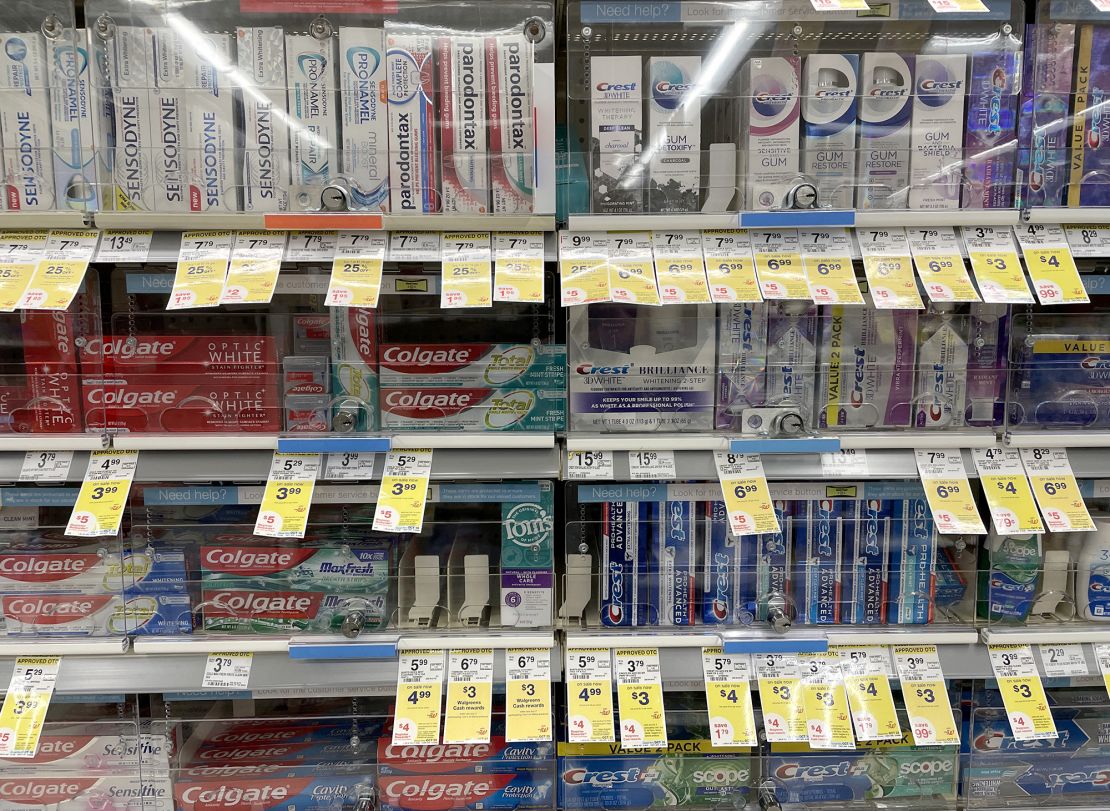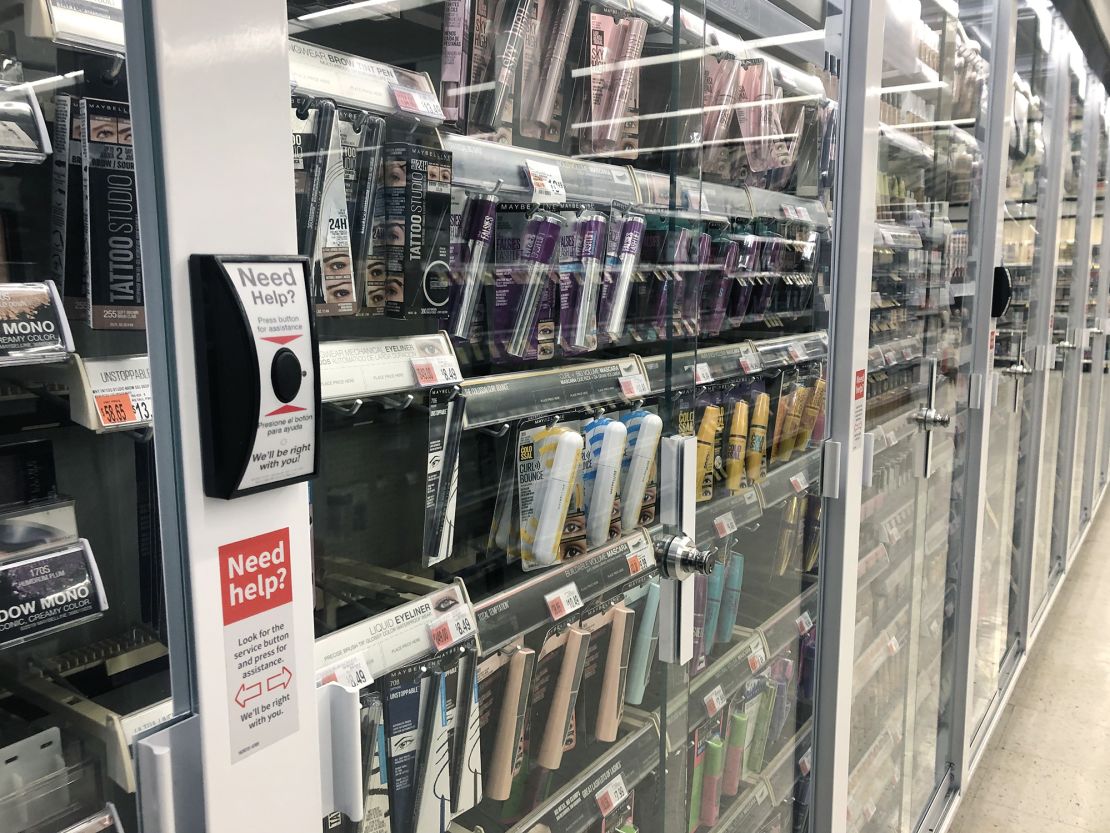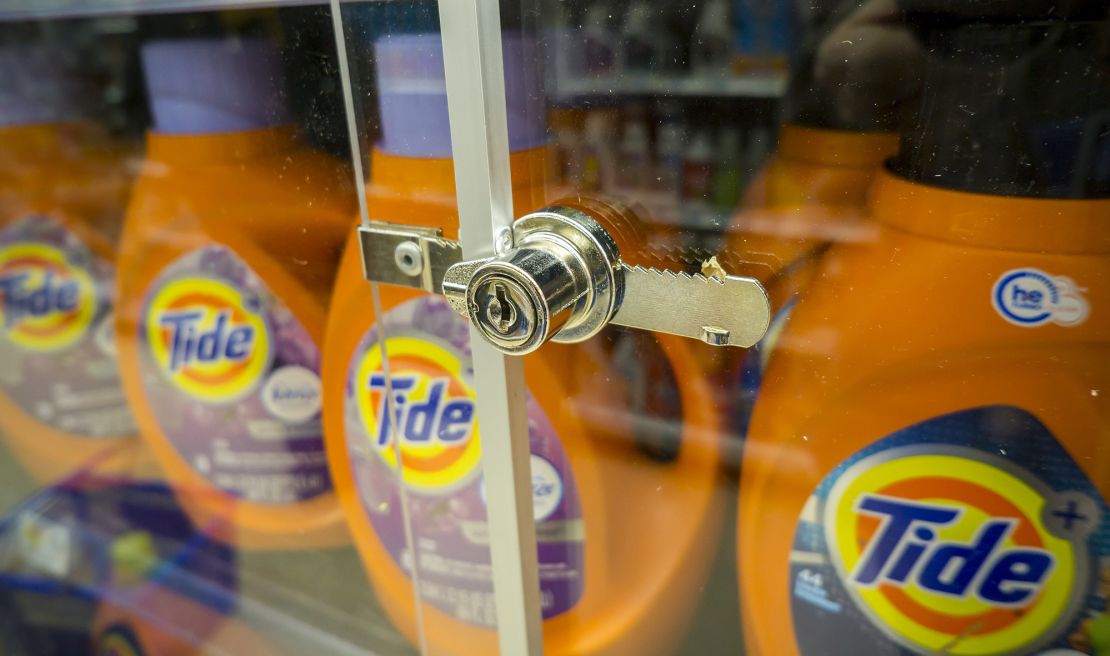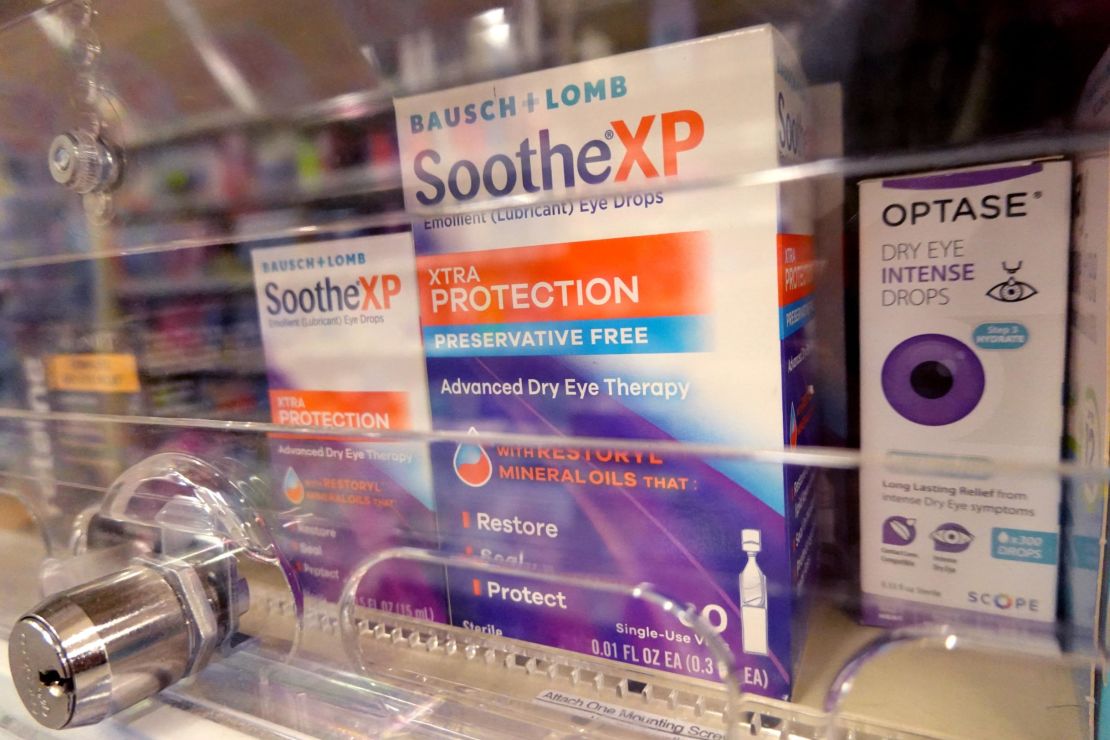These days, it feels like many stores are fortresses.
Most of the products on the drug store shelf are behind lock and key, even everyday items such as deodorant, toothpaste, candy, dish detergent, soap and aluminum foil. Manufacturers that supply lock cases and devices to chain stores have seen their businesses boom.
Walgreens and Rite Aid have said that the problem of organized retail crime – rings of criminals that steal products from stores and then often resell them on online marketplaces – is causing them to lock more products up and close some stores.

Locking up their shelves is a last resort for stores, but it has never been more widely practiced. It’s also become a growing irritation for shoppers and a source of frustration for some employees who must walk around the store with keys at the ready.
“It’s extremely discouraging to customers,” said Paco Underhill, the founder of behavioral research and consulting firm Envirosell. “It is a brutal experience for the merchant, too.”
The reason why stores resort to locking up these products is simple: to prevent shoplifting. But these decisions are far more nuanced and fraught for stores than you may think. Companies must walk a delicate line between protecting their inventory and creating stores that customers don’t dread visiting.
Shoplifting in America
Until the early 20th century, locking up products was the norm. When customers visited a store, clerks would provide them with the items they wanted from behind a counter.
This changed as the first self-service stores like Piggly Wiggly in the early 20th century discovered they could sell more goods and reduce their costs by spreading out merchandise on an open sales floor.
While having fewer workers in the store increased profits for chains in recent decades, it has left stores in some cases without as many visible personnel to deter shoplifting, crime prevention experts say.

Shoplifting has been around for centuries, but it “came of age in America in 1965,” author Rachel Shteir writes in “The Steal: A Cultural History of Shoplifting.” The FBI in 1965 reported that it had jumped 93% in the prior five years and “was the nation’s fastest-growing form of larceny.”
Three years later, officials around the country said there had been an additional surge in young teenagers shoplifting. The trend became part of the counterculture, as exemplified by Abbie Hoffman’s 1971 “Steal This Book.”
In response, an anti-shoplifting industry and corporate “loss prevention” (LP) and “asset protection” (AP) teams sprang up. Technologies also emerged such as closed-circuit TV cameras, electronic article surveillance and anti-theft tags.
‘Hot products’
Stores look to protect “the vital few” products that are most profitable for them to sell, said Adrian Beck, who studies retail losses at the University of Leicester. And they’re willing to accept higher theft on the lower-margin “trivial many,” he added.
Shoplifters target smaller items with higher price tags, often called “hot products,” which typically are what retailers most frequently lock up. One criminologist created an apt acronym, CRAVED, to predict the stuff at highest risk: “concealable, removable, available, valuable, enjoyable, and disposable.”

The most commonly stolen items at US stores include cigarettes, health and beauty products, over-the-counter medications, contraceptives, liquor, teeth-whitening strips and other products.
Drug stores have a higher proportion of the items that are “hot products,” so they have more stuff under lock and key than other retail formats, Beck said.
Organized retail crime
There is only so much that can be done to to stop shoplifting. Companies prohibit retail staff from physically trying to stop a shoplifter for their own safety and must find other ways to protect the merchandise.
These include measures such as security tags on items that set off alarms when someone walks out without paying. But this is less valuable than it used to be because alarms have become part of the general cacophony of store noise and often go ignored.
Stores also use strategies such as shelves that allow a customer to take only one item at a time. This helps prevent shoppers emptying an entire shelf of products.
Locking up a product is the final step a retailer will take before removing it altogether, and stores say they are resorting to this measure more frequently as theft continues to increase.
There is no national database on shoplifting, which often goes under-reported, and stores and prosecutors rarely press charges.

Retailers say organized retail crime has made their theft problems only worse. Crime gangs often look to steal products from stores that can easily and quickly be resold on online marketplaces such as Amazon and through illicit markets.
“More products today are locked up because the problem has gotten so much bigger,” said Lisa LaBruno, the senior executive vice president of retail operations at the Retail Industry Leaders Association. “Criminal actors can steal high volumes of products and sell them with anonymity.”
Retailers have supported a bipartisan bill that would require online marketplaces to verify state-issued IDs for millions of high-volume third-party sellers. President Joe Biden supports such a measure and this week also called on Congress to impose liability on online marketplaces that sell stolen goods on their platforms.
Amazon said it does not allow third-party sellers to list stolen goods and works closely with law enforcement, retailers and other partners to stop bad actors.
“We regularly request invoices, purchase orders, or other proofs of sourcing when we have concerns about how a seller may have obtained particular products,” a spokesperson said.
Irritated customers and lost sales
Unfortunately, many of these time-consuming anti-theft measures wind up irritating customers and cut into sales. One anti-theft device company’s CEO told Forbes that locked up stuff can result in sales reductions of 15% to 25%.
Shoppers today are more impatient. Some will walk out and buy the product on Amazon instead of hanging around for a worker.
“You’re trying to be as frictionless for the customer but still prevent the loss,” said Mark Stinde, a former vice president of asset protection for Kroger and other large retailers. “You get a lot of pushback from operations and merchandising teams for locking stuff up.”
Stores are working on new ways to lock up products while reducing customer frustration, such as a new type of case that any employee can open with a smartphone. Other cases require shoppers to enter their phone number to open or scan a QR code.
“Consumers understand why you have to lock up a fur coat or jewelry. But they say ‘why are we locking up deodorant?’” said Jack Trlica, co-founder of trade publication LP Magazine.
Trlica expects companies will develop new technologies that protect products but don’t require flagging down an employee to unlock a shelf.
“There’s going to be an evolution of security products,” he said.
Correction: A previous version of this story incorrectly identified Paco Underhill as the current CEO of Envirosell. Underhill stepped down in 2020 and acts as a strategic adviser to the company.




















